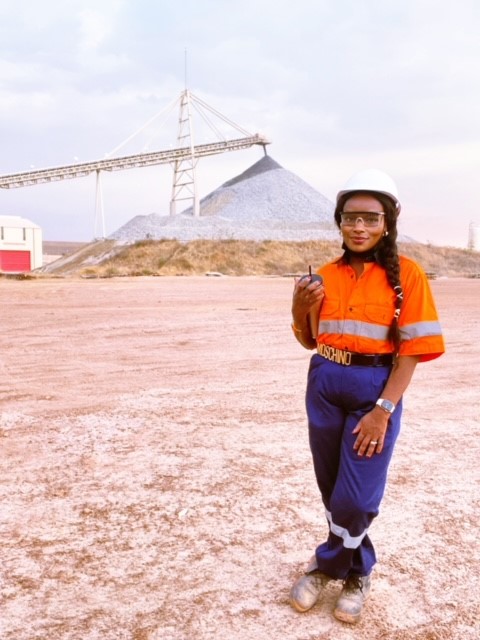Guest blog by Nandy Blay
My task was to design a comprehensive and responsive occupational health (OH) service for the mine, to undertake a health needs and risk assessment. I was also to advise on OH service provision.
One of the first things I identified was workers’ exposure to the sun. I queried the existing protocol which required people working outside to have hard helmets, rather than sun protection hats that would protect against exposure to ultraviolet rays.
The health and safety manager, a UK-trained NEBOSH health and safety professional, had a clear understanding of OH which was extremely beneficial in ensuring the success of the project. One of the main challenges he had was defining workplace injuries and ensuring that preventative action was taken to mitigate them.
I also reviewed the legal remit under which the service had to be delivered. The Mali social code is like the UK National Insurance Scheme. The code requires that companies provide workers with medical and sanitary services for prevention and avoid deterioration in the health of workers because of their work, in particular by monitoring working conditions and health. The code provides that every worker must undergo a medical examination before being hired or, at the latest, before the end of a trial period. It also requires all employers to undertake annual mandatory medical assessments of employees. These tests involve a review of body mass index, a visual acuity review, blood pressure and urine tests to rule out the incidence of diabetes and identify hypertension. The examination is fixed by the joint order of the Ministers of Labor and Health which requires that the following questions are answered:
- whether the worker is medically fit for the work envisaged;
- whether the worker is not suffering from a condition that is dangerous to his fellow workers and
- the positions to which, from the medical point of view, he should not be assigned and those that would be most suitable for him.
Before my attendance these checks were undertaken annually, delivered by an external OH provider who would report the outcome in terms of health and wellbeing. However, these checks lacked workplace adjustments, review of spirometry and/or audiology results. In October 2022, following the purchase of specific equipment, OH delivery began offering a standardised version of a wider health assessment.
The mine then started underground operations, with the need to consider the OH and safety of new employee groups, particularly safety critical medicals required for these operatives. One of my first recommendations to the health and safety manager was for an OH service to be available online so that access to all specialist OH practitioners could occur remotely.
I recommended having technicians employed in the OH service who would be trained to undertake the basic health checks. OH technicians, who could speak French and Bambaran, could be trained to undertake BMI and blood pressure checks, mobility assessment for safety on a mine site and visual eye tests including checking for peripheral field vision. We also initiated routine urine tests. A laboratory on-site provides safety-critical personnel routine HBA1c checks as part of standard medical procedures.
The next stage of this project is to train OH technicians to deliver medical checks. This involves a Chester step check for aerobic capacity and an ECG check to rule out cardiovascular risk as much as practical. They will also be trained to provide specific reviews for visual acuity and hearing with oversight from a local occupational health physician.
Long term, there is a scope within the service to have health and wellbeing initiatives, implement an in-house physiotherapy service and implement clubs to support employee groups with managing weight loss; managing hypertension; living with diabetes; raising awareness about working safely in the sun; noise conservation; avoiding lead poisoning, and preventing occupational asthma.
Nandy Blay is an occupational health
Nurse Specialist Practitioner.


